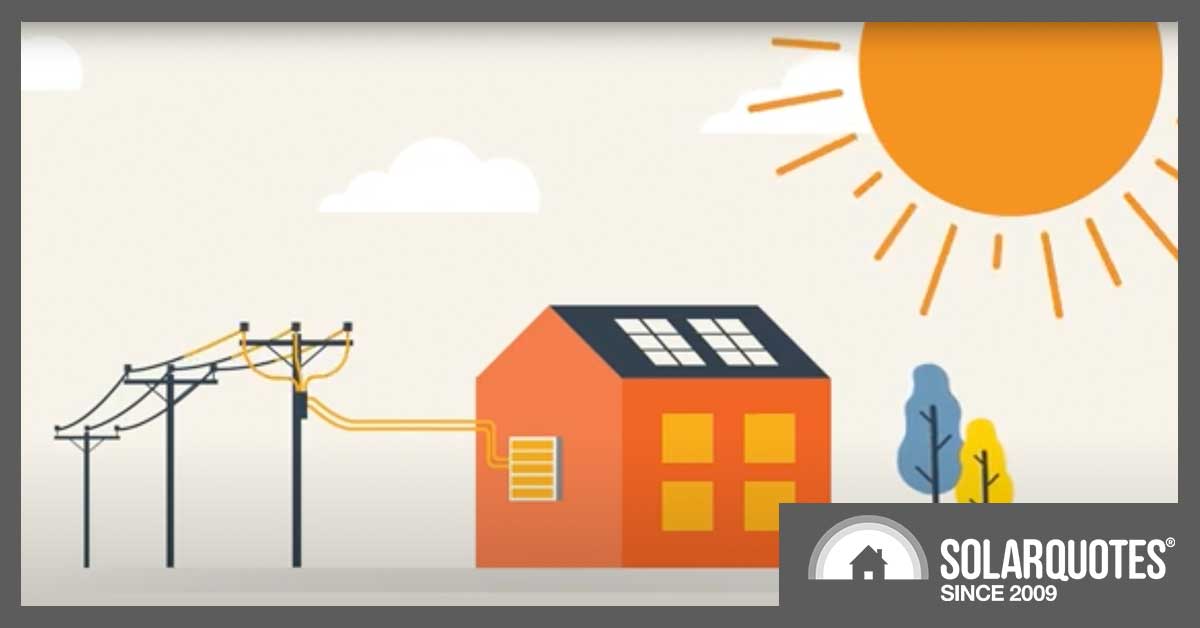
SA Power Networks (SAPN) is arguably the Australian electricity network most advanced with its home PV integration strategy of flexible solar energy exports.
In the previous 12 months, South Australia generated more than 70% of its energy from wind and solar power, and at times, renewables exceed demand on SAPN’s network.
As we all know, that’s a problem. To avoid damaging voltage rises and frequency fluctuations, SAPN sometimes has to limit its customers’ solar output.
As well as its fixed export limits (originally 5kW, now reduced to 1.5kW), SAPN is implementing flexible exports that allow a 10kW export limit most of the time, but will dynamically reduce that limit when required by the local grid.
“Banning new connections or limiting exports to a lower fixed limit would reduce displacement of fossil fuel generation,” Blake Ashton, SAPN network systems and data analyst said in Microsoft blog post.
“We needed to implement a solution to manage the limits in a dynamic fashion.”
As an existing customer of Microsoft’s Azure cloud computing services, SAPN decided to build a network management proof-of-concept on the Azure IoT (Internet of Things) service.
98% Of The Time At Full Export Capacity
SAPN deployed the system in a 400-user trial in congested parts of the network, which started in 2021 and concluded in 2023. This resulted in a decision to roll out flexible exports for all new installations in the network. According to SAPN, customers in the trial were able to export the full capacity of their solar power systems 98 percent of the time.
Powered By The Internet of Things
For those unfamiliar with the term, the Internet of Things (IoT) refers to small, often single-purpose intelligent devices like sensors, connected over the Internet to an organisation’s computing infrastructure to send status information, and receive commands.
In the case of SAPN, the IoT requirement was to monitor and manage customer inverters to enable flexible exports.
In the Microsoft post, Rocco Lupoi, DevOps capability manager at SAPN, explained the network’s requirements.
“We needed the potential to eventually monitor hundreds of thousands of devices in a live, fast-paced manner, and collect monitoring information at five-minute, if not even shorter, intervals.”
The proof-of-concept built on Microsoft’s Azure IoT enrols customer sites for flexible exports, monitors each site in five-minute intervals for the power exported to the grid at that site, and generates export limits between 1.5kW and 10kW.
By increasing customer solar exports, SAPN’s executive general manager, innovation and technology Chris Ford said more low-cost renewable energy is available to the distributor’s customers.
The system also gives SAPN visibility deep into the network for quicker problem resolution and better network planning.
On a related note, regulations to govern flexible exports across Australia’s National Electricity Market (NEM) are in the works. The Australian Energy Regulator (AER) published its “final response” to a consultation conducted late in 2022 in August this year.

 RSS - Posts
RSS - Posts



So now that SAPN understands that it is completely possible to regulate inverters in such a way, there should be a higher value maximum inverter capacity allowed (and PV size) (but within the individuals consumer mains connection limit) and regulation of HW Services, so that consumers can have greater opportunity to provide their own power in the early and late afternoon and during cloudy wintery weather, and so reduce the amount we draw during peak times.
100% agree but me thinks it maybe ain’t gonna happen anytime soon… I wrote to SAPN to ask them this question …they replied with what seemed like a fairly generic answer & didn’t say if it was being considered for the future or not
What’s the word on throttling back generation from large scale solar farms? Or is the idea to rig the market against consumers even more to favour big solar?
It depends on their connection arrangement, but they will self-curtail if they are exposed to the spot price and it goes negative (economic reasons). And they have all 3rd party control so they can be curtailed when the grid needs it for engineering reasons.
Is the “flexible export” scheme available in QLD? – if so can details be sent to me pls
https://support.solarquotes.com.au/hc/en-us/articles/8082397587343-Can-you-have-unlimited-solar-export-in-Queensland-
From my experience, Flexible Exports is a scam. I have a larger system and was on a fixed 5kW feed in arrangement for over a year, after changing over to Flexible Exports I will now be losing up to $140 per quarter with reduced feed-in tariffs. I asked my installer to configure my inverter to Flexible Exports with the belief that I would be better off, now my feed in is limited to just 1.5kW from 10am to 3pm every day because of ‘network congestion’. If there’s known network congestion in an area, why are SAPN offering Flexible Exports? It’s bad enough dealing with the energy retailers, now the network owners are ripping off consumers.
What suburb are you in, Andreas?
Hey Finn, I’m in Northfield, which is about 8klms north east of the city. SAPN have come back to me this morning to say that they’re looking into it, but, it’s a pretty concerning situation from my perspective.
Let us know how you go. Really keen to know if SAPN are throttling more than they implied!
Hi Andreas,
I’ve actually sent this to new energy services and corporate affairs at SAPN so we’ll see what they say.
Do you have some monitoring data showing grid voltage?
Hey Anthony,
The New Energy team at SAPN are across this and are following up with a team next week, so, they appear to be taking it seriously which is good.
I’m not sure if I can extract data form the app, but, I’ll see what I can find out. I have a few screen grabs of the production graphs from the app which immediately highlight the glaring gap from 10am to 3pm.
To the best of my knowledge, I can’t post images in this blog?
Thanks, Andreas
Hi Andreas, email to [email protected] and we can have a look. include some system details if you can. Cheers
Thanks Anthony,
I’ve learnt something new today, there’s a SolarEdge desktop platform!
I have gathered some data and sent you a spreadsheet, thanks for looking into it.
Much appreciated, Andreas
UPDATE! SA Power Networks have rectified the limitations with my exports as of late September and the feed-ins appear to be back to normal. Thanks to the SAPN New Energy and Low Voltage teams for resolving the issue.